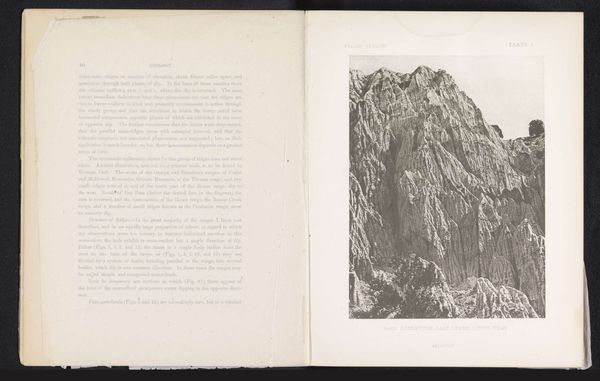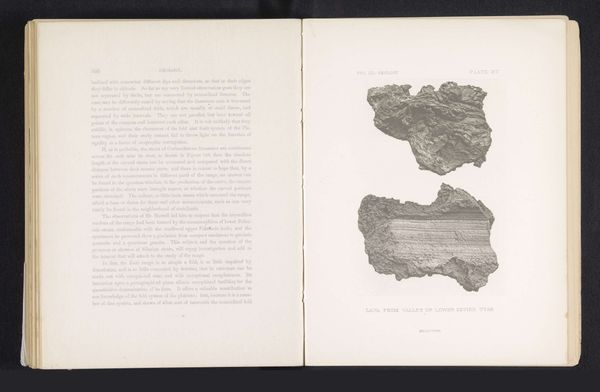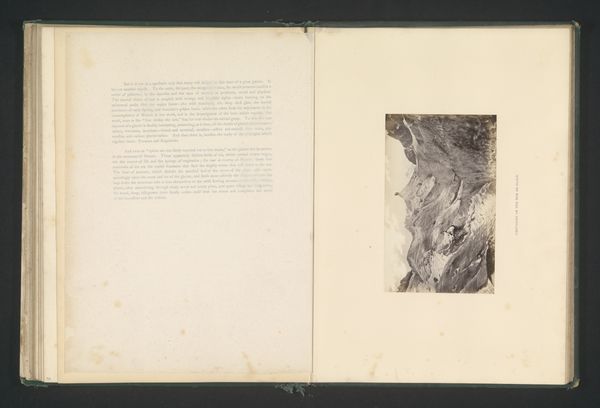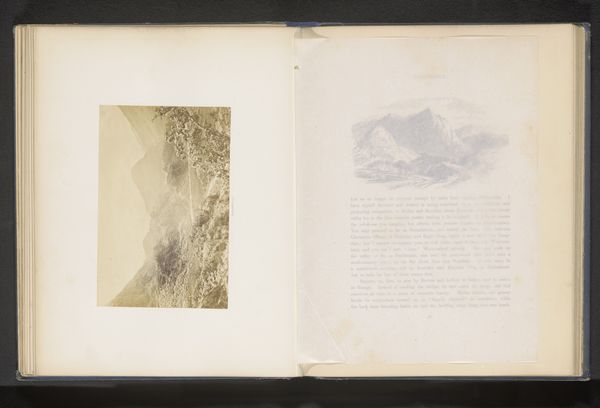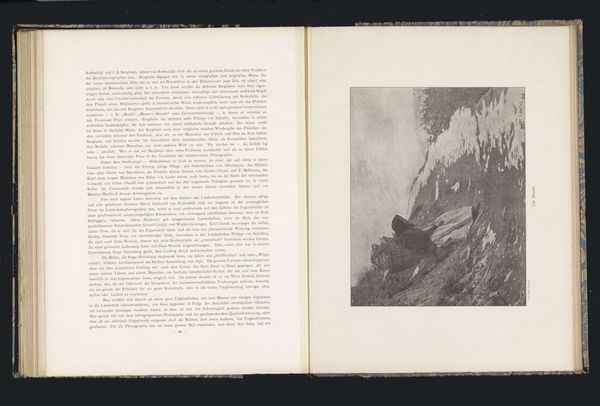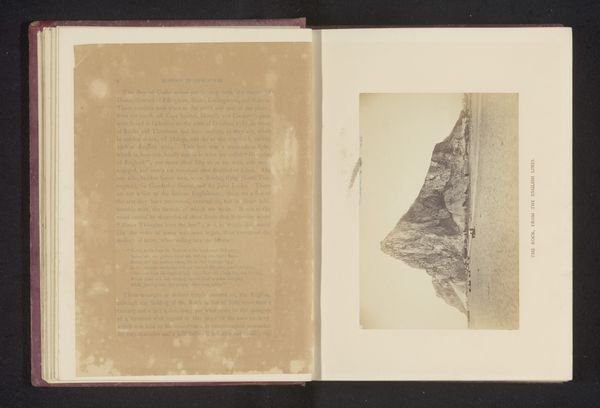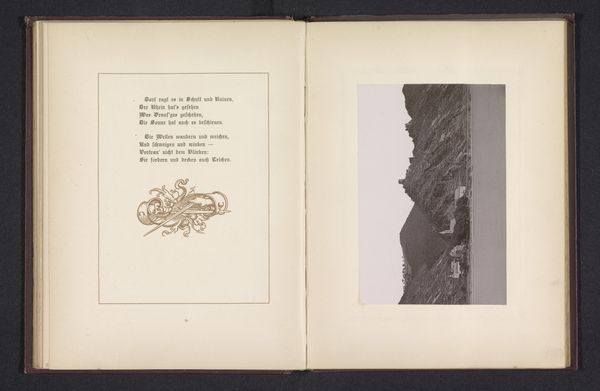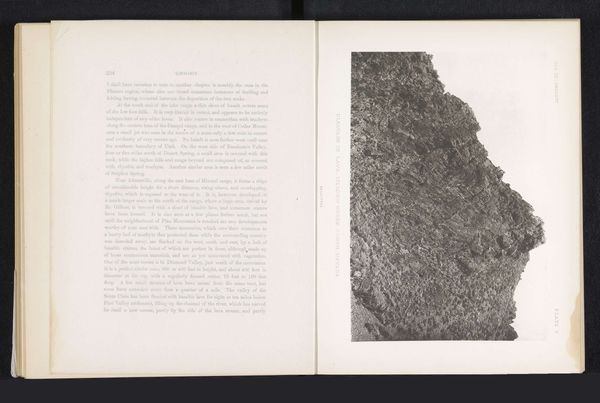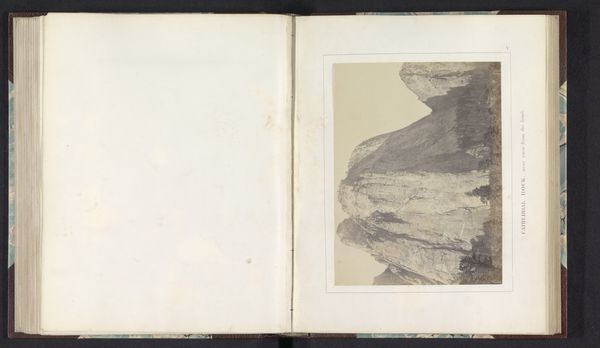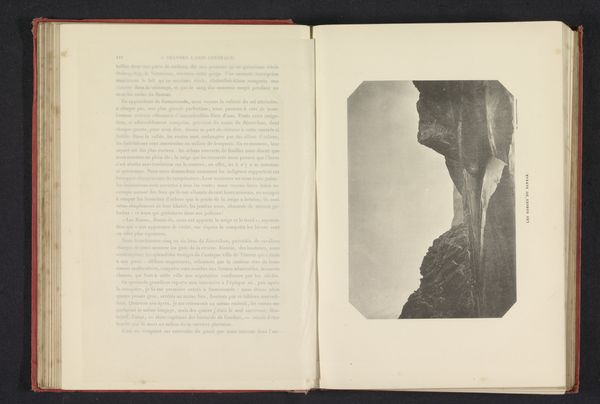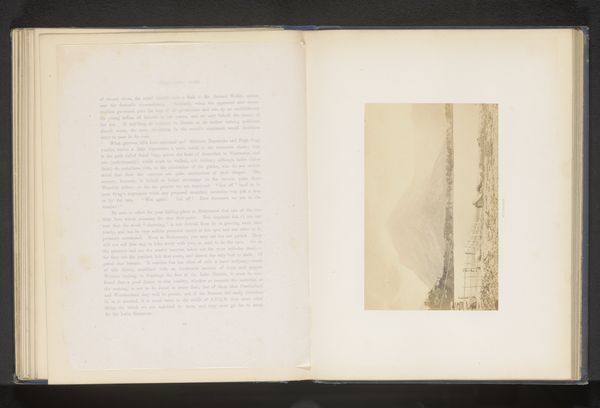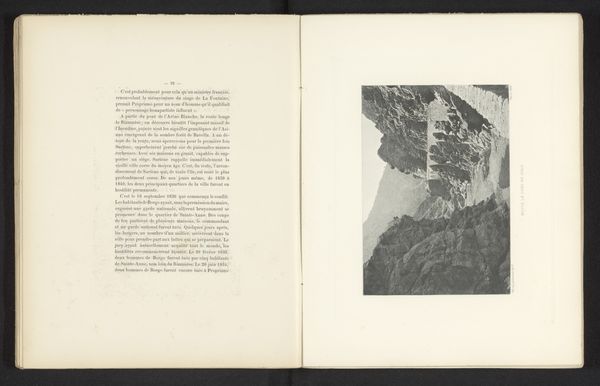
print, photography, gelatin-silver-print
# print
#
landscape
#
photography
#
gelatin-silver-print
#
hudson-river-school
Dimensions: height 170 mm, width 166 mm
Copyright: Rijks Museum: Open Domain
Curator: The monochrome tonalities initially create a bleak feel. A severe chunk of rock faces forward, cut off unnaturally as though it were a kind of specimen pinned in place. Editor: Here we have a gelatin silver print titled "Rock Carved by the Colorado," taken by Timothy O'Sullivan sometime before 1875. O’Sullivan worked at a time when photography was changing how we saw both science and art. Curator: Yes, the "Rock Carved by the Colorado” appears at first as geological documentation. But its resonance stems, in part, from the understanding that it was made for scientific purposes, as so much work was at the time—ostensibly objective views produced within extractive and often brutal economic systems. The lack of human presence almost echoes the systematic erasure of indigenous land use. Editor: It speaks volumes of time and perseverance, both through the natural process of water erosion and in our cultural understanding of natural monuments. Its rough surface is suggestive. Notice how these undulating wave-like cuts contrast against the flat surface, drawing us toward those shapes, so regular but unique. Curator: Absolutely, there's something about how this piece fits into larger discussions of land rights and resource exploitation in the American West. Think about manifest destiny, the gold rush, and forced removal. To what extent do the seemingly detached views presented obscure histories of oppression and dispossession? Editor: Yet there's an emotional context to its history. It makes me think of the visual rhetoric in religious art where rocks, caves, and water serve to remind the viewer of trials and resilience. In some ways the work recalls concepts such as purification. But its symbolism runs beyond just western ideologies: what different forms of worship and spiritual recognition may be embedded within and evoked by the carved form itself? Curator: Indeed, situating this stark piece within those broader frameworks helps me engage with not just what it is presenting on a purely documentary level, but how it can stimulate deeper conversations around historical context and systemic social imbalance. Editor: And that’s how art—and photography—can be understood and internalized through shifting patterns of meaning. Thank you for considering the multiple perspectives held in this work with us today.
Comments
No comments
Be the first to comment and join the conversation on the ultimate creative platform.
